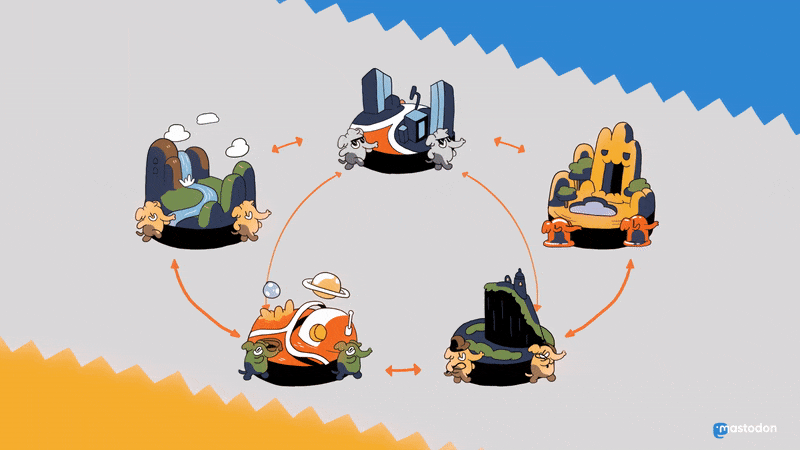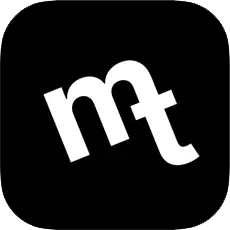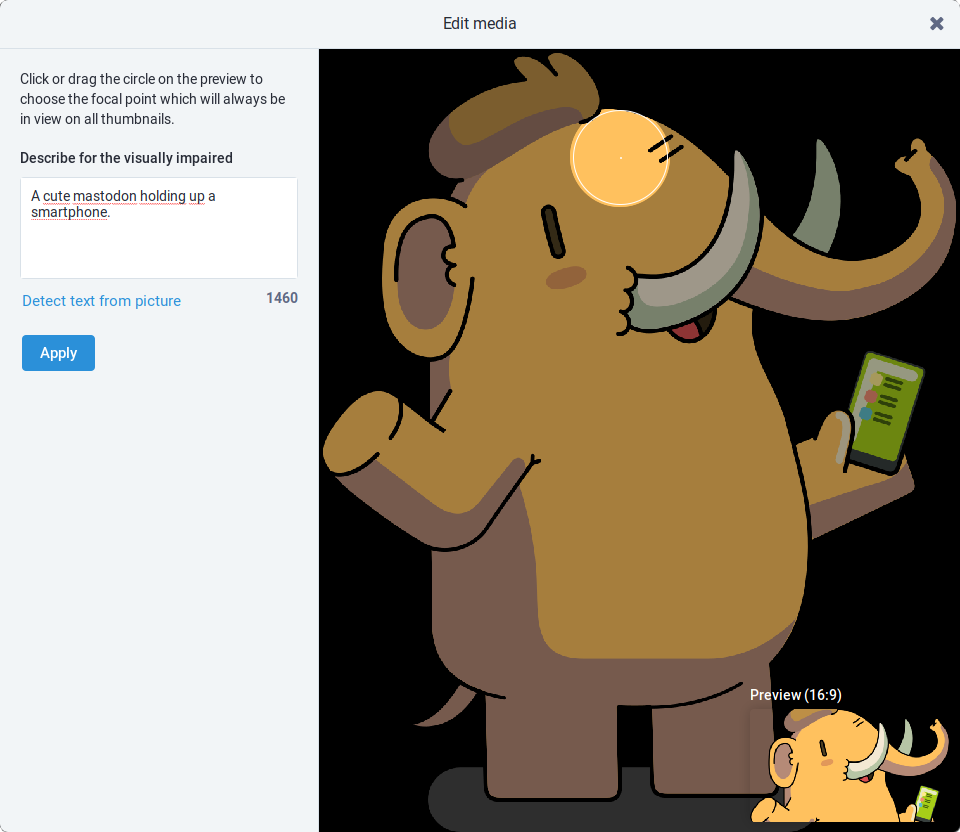Hello friends!
I wrote this quick guide in a short time trying to cover most important basics for new users. However, if you still have open questions or think I missed something don’t hesitate to write a comment! I’ll try to update this page with any information that seems really important.
What is Mastodon?
Mastodon is a free (as in freedom) social media network developed and run by independent and committed people. Other than social media networks run by big businesses, it is run by people mostly during their free time, who truly care about a healthy environment and wish for their idea to succeed. It is free of ads, and there are is no algorithm trying to learn from you. Your data will also not be sold to data brokers on any trustworthy Instance (more on that below).


Differences compared to Twitter
- No Advertisement: Other than on Twitter, Mastodon does not feature sponsored tweets (or ‘toots’ as it is called here).
- No Algorithm: Mastodon does not have an algorithm. Instead your timeline will always be shown in chronological order. However, if there is an account you’re specifically interested in you can click on a bell icon 🔔 in their profile to receive notifications about new toots. You may also use lists (for people you follow).
- No single moderation authority: There is not a single “Mastodon company” that is in charge of moderation, but you can join any server (instance) you like. They all speak to each other, like Email. This means overall more active moderation, less political pressure on moderative decisions and no faulty auto-restrictions after orchestrated mass reportings.
- Multiple Timelines: While there is no algorithm that meddles with your personal timeline, on Mastodon you get two extra one. The Local Timeline will show your any public toot from people on your own server (instance) while the Federated timeline shows a huge amount of truly random toots from all over the network.
- No Quotations: Other than in Twitter, you can not quote someone else’s toot. This was a deliberate design decision by Eugen, developer and maintainer of Mastodon. You can read up his reasoning here, it makes sense after thinking about it.
- Search in Progress: As of now the Mastodon Search will mostly give back hashtags and user accounts. Full-Text search wasn’t a focused task in earlier development and is currently, with the huge surge in user numbers, rapidly worked on. However the question how exactly it will be implemented is still up to debate.
What is an Instance & how to choose yours
A Mastodon instance is a single provider of Mastodon with their own ruleset. Think of it like Email: You have multiple providers like gmail, hotmail or outlook. You have to choice which one you make your account on but don’t have to worry about not being able to talk to your friends. No matter which provider you end up choosing, they all use a common protocol to be interoperable.
The best way to choose your home instance is by using the instance finder utility of instances.social. It will lead you through a few questions to find an instance that fits best for you and give suggestions where to go. Feel free to take your time here – given Mastodon offers you a “local” timeline with public toots coming from people on your own instance this choice really matters.
What mobile apps are there to use with Mastodon
There is a well sorted list of apps you may use on joinmastodon.org. My personal recommendation for Android is Tusky. For iOS I’ve heard a lot of good things about Metatext.
Your Timelines & About Federation
Mastodon offers you 3 different Timelines:
- Home: This is your personal timeline. It will show you any toots coming from people you’ve followed in chronological order.
- Local: This timeline shows you any public toot from people that share the same instance as you.
- Federated: This timeline is full of random toots from all over the internet, no matter where someone comes from. It is by far not all there is, but definitely interesting given its unfiltered (and sometimes naughty) nature.
Below is a visual example that might help you understand how a federated social network works. In it, you just created your account on “mastodon.art”. You can follow any person anywhere to fill up your Home timeline. Your Local timeline is filled with toots from fellow mastodon.art users. And the Federated timeline is a mix of all the toots coming from bern.social as well as tech.lgbt.
Content Visibility, Accessibility and Warnings
Given the roots of Mastodon and many developers’ backgrounds it has a more sensible approach towards communication. There are three major features you should familiarize yourself with:
Content Warnings
These are really useful if you post something questionable or content that might deserves a previous notice. It’s mostly used for example for lewd content, political content (so people can scroll over it) or if someones really needs to vent and throws insults.
If you saw the newest episode of some popular series using a CW to talk about it is also highly appreciated by literally everyone.
There’s an ongoing discussion about renaming it to something more fitting given its wide usage. You can participate here if you want.
Picture Description
If you include a picture in your toots you’re able to add a picture description. This may not only help with more context information, but is especially useful for blind people who can not participate unless image descriptions are added. Without them their screenreaders will only say “image”, basically excluding them from any proper conversation. It might feel troublesome at first, but taking your time for every toot can be rewarding in itself.
If you just want to quickly send something, please take the time to at least add a short description like “[something] at [somewhere]” for our fellow tooters.
Visibility
Last but not least, there’s visibility. Every toot you write can be send in four different ways, depending on who you want to see it:
- Public: Visible for all, will federate globally
- Unlisted: Unlisted toots will show up in your followers timelines and are visible in your profile, however it won’t show up either in the local or federated timeline by itself.
- Followers only: As it says, only followers will be able to see this.
- Mentioned people only: This is Mastodons version of Direct Messages. Only those who’re mentioned will receive and see these toots. Make sure not to accidentally mention someone you don’t want to add to the conversation!
Very useful for threads: Make the first toot public and each following unlisted. That way the first toot of a long thread is publicy visible without having the whole thing clutter someones timeline. Thanks to Wayne for mentioning it!
Tools to find others easier
There are two tools that are especially useful to find other users. The first one is called twitodon, a tool that looks up your Twitter followings and searches for any references to Mastodon in their profiles.
The second is the Directory feature on fediverset.info. Many people added their accounts into it and included topics via hashtags in their bio for new people to discover them more easily. It’s a good start, given there’s no algorithm that relentlessly shovels things into your personal timeline.
“Is there something like Tweetdeck?”
Yes! You can activate the “Advanced Web Interface” in your Mastodon settings under Preferences –> Appearance.
What is the Fediverse?
The explanation earlier actually only represents a small part of the network Mastodon is part of, called the Fediverse. In addition to the many Mastodon instances that are connected with each other using the “ActivityPub” protocol, there are also other services. The most popular examples here are Pixelfed, which is an alternative to Instagram but without hurtful algorithm or ads, or Peertube (e.g. TILvids), which is a video platform like Youtube. They of course also follow the same concept of multiple instances and everyone being able to host their own.
Let’s assume again you got your Mastodon account on mastodon.art. If you watch a nice video on a Peertube instance like TILvids.com, you’re able to like, comment AND follow by simply using your Mastodon account! By doing so, everything posted and every comment will show up in your Mastodon feed just as they were in the same platform. Same works with Pixelfed, meaning you don’t have to have an account all over the internet just to follow your favourite creator on multiple platforms.
However, if you want to create videos or have a nice photo gallery there’s nothing bad about having multiple accounts across the Fediverse as one service won’t act like account provider for another (and your Mastodon feed might look really awkward if looked at as a Pixelfed feed). Don’t hesitate to cross-reference your accounts so people can follow you everywhere – just using their one account!
If you’re curious about all the services you may be connected to with your Mastodon account, there’s a great article about it over at axbom. If this short description of the Fediverse left you with questions, there’s also a great video about it from The Linux Experiment.










A couple of ideas.
The Alt-text. in the format of:
This is a of a in/at .
if you are making a thread:
Set the first post to public. Reply to that post as unlisted. It helps unclutter the timeline.
Rather use a content warning if you have any doubt.
Twitter always felt like I had to collect followers and follow everyone, but here I really like a small curated timeline that just keeps me posted about my interests. Which is much better for my mental health.
Thank you for your suggestions, I added the first two to the article!
Thanks for this guide, this can be very helpful for newcomers.
However, in my opinion, a crucial difference is missing again: Whether someone wants to or not: whoever is active on Mastodon is part of the Fediverse. It is not just microblogging, but inevitably also networked with macroblogging, image sharing, etc.. And the timeline of a Mastodon account does not only consist of Mastodon, but also contains the contributions of other software that can do more or something else than microblogging.
It would be important for many to know this in advance, otherwise they will come with false expectations.
Added it in a way that should be most understandable for non-technical users. Thank your for your input!